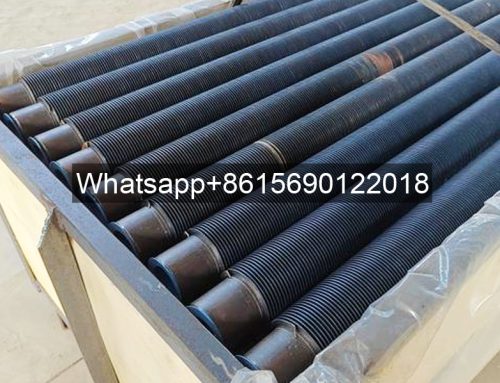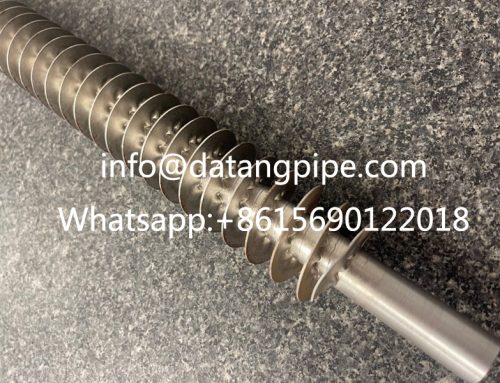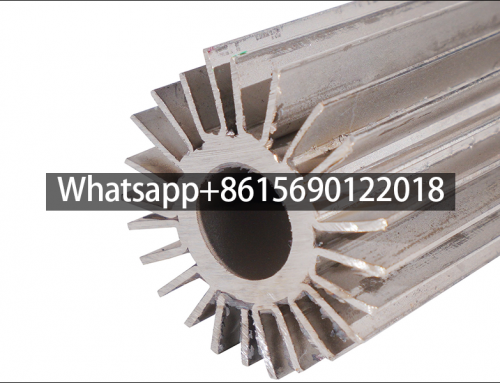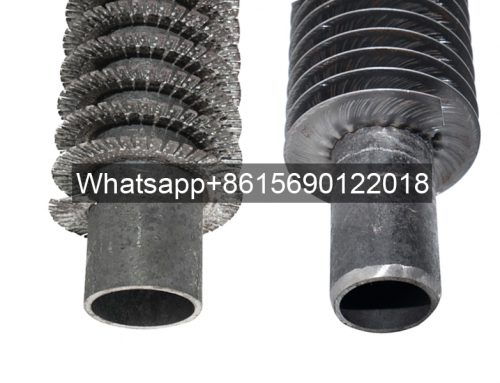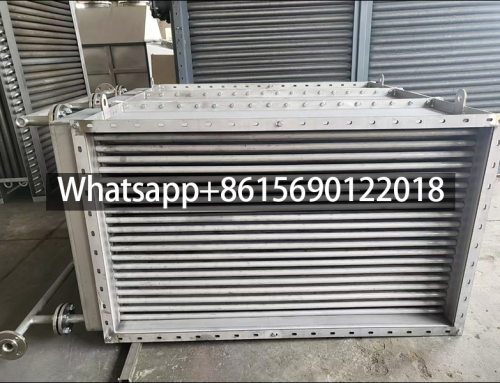What are the manufacturing processes of spiral finned tubes?
Spiral finned tubes achieve efficient heat transfer through integral rolling, welding, winding or extrusion molding, and are suitable for high pressure and high temperature, industrial heat exchange and civil refrigeration, and have both strength and performance advantages.
The manufacturing process of spiral finned tubes can be divided into many types according to the combination method of fins and base tubes, material properties and structural requirements. The following are common manufacturing processes and their characteristics and application scenarios:
1. Integral rolling process
Principle: Through special rolling equipment, the base tube (such as steel tube, copper tube) is heated or at room temperature, and the spiral fins are extruded by a mold, and the fins and base tubes are formed as one piece.
Features of integral rolled finned tubes:
High bonding strength: There is no welding seam between the fins and the base tube, the overall structure is firm, and the pressure bearing capacity is strong (can reach more than 3 times that of ordinary light tubes), which is suitable for high pressure and high temperature conditions.
Excellent heat transfer performance: no contact thermal resistance, high heat conduction efficiency, smooth fin surface, and low fluid resistance.
Processing restrictions: The base tube material needs to have good ductility (such as carbon steel, stainless steel, copper alloy), and the fin height and thickness are limited by the rolling die. Usually the fin height is ≤20mm and the thickness is ≤3mm.
Applications of integrally rolled finned tubes: power station boiler economizers, air preheaters, chemical high-pressure heat exchangers, condensers of refrigeration equipment, etc.
2. Welding process
The fins are fixed to the surface of the base tube by high-frequency resistance welding. The skin effect and proximity effect generated by high-frequency current are used to instantly heat the contact surface of the fin (steel strip) and the base tube to a molten state, and the weld is compacted by an extrusion roller to form a spiral weld.
Features of high-frequency welded finned tubes:
High welding efficiency: continuous and automated production, suitable for mass production, and low cost.
High bonding strength: The heat-affected zone of the weld is small, the fins are tightly bonded to the base tube, and can withstand certain vibrations and shocks.
Wide range of applications: The base tube material can be carbon steel, stainless steel, alloy steel, and the fin material can be the same or different from the base tube (such as steel-steel, steel-aluminum).
Applications of high-frequency welded fin tubes: industrial heat exchangers, air conditioning condensers, boiler convection tube bundles, etc.
3. Winding process
Wrap the metal fins (steel strips, aluminum strips, etc.) on the surface of the base tube at a spiral angle, and prevent loosening by mechanical fixation or auxiliary connection (such as spot welding, gluing).
–Inlaid winding
Principle: The base tube is pre-processed with a spiral groove, and the fins are embedded in the groove and fixed by rolling or expanding the tube to form an interference fit.
Features of embedded fin tubes:
Close contact: Mechanical fixation reduces the gap between the fin and the base tube, and the thermal resistance is low, which is suitable for medium and low temperature conditions.
Low processing cost: No welding equipment is required, suitable for small batch customization or maintenance scenarios.
Applications of embedded fin tubes: small heat exchangers, HVAC radiators, agricultural drying equipment, etc.
–Tension winding
Principle of Crimped fin tube: The fin steel strip is spirally wound on the base tube through a tension device, and fixed by the friction generated by elastic deformation. Some processes are supplemented by intermittent spot welding.
Features of Crimped fin tube:
Flexible fin spacing: The spacing can be changed by adjusting the winding speed to meet different fluid resistance requirements.
Contact thermal resistance: The fins may relax due to thermal expansion under long-term high temperature, affecting the heat transfer performance.
Application of Crimped fin tube: General industrial air coolers, flue gas waste heat recovery devices, etc.
IV. Extrusion molding process
Principle of Extruded fin tube: For materials with good plasticity such as aluminum or copper, the base tube and fins are formed at one time through an extrusion die. The inside of the base tube is a plain tube and the outside is a spiral fin.
Features of Extruded fin tube:
Integrated structure: No connection gap, the heat transfer efficiency is the highest, and the surface is smooth and the fluid resistance is small.
Material restrictions: limited to low melting point metals such as aluminum and copper, with poor high temperature resistance (aluminum fins ≤ 200°C).
Extruded fin tube applications: civil refrigeration scenarios such as air conditioner evaporators, refrigerator condensers, and automotive oil coolers.


